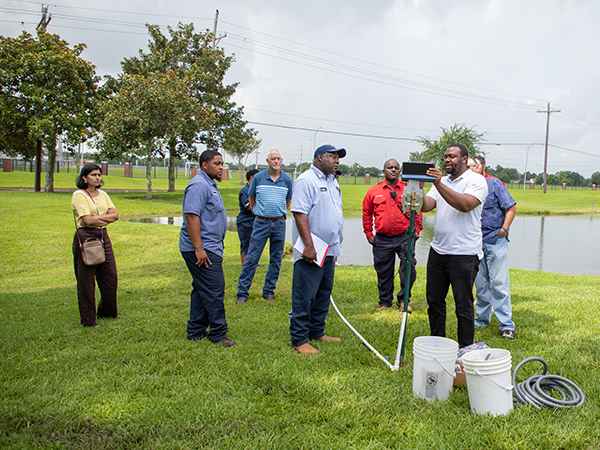Dr. Liv Haselbach Receives NOAA Funding to Study Community Flood Resiliency
October 13, 2021 | by Haley Strahan
Dr. Liv Haselbach, chair of the Department of Civil and Environmental Engineering, along with Paola Passalacqua, R. Patrick Bixler and John Swartz of University of Texas at Austin and Hamed Moftakhari of University of Alabama , has received funding from the National Oceanic and Atmospheric Administration for a project titled “Understanding current and future coastal flood risk: How do local governance networks shape resilience efforts in response to perceived hazards?” 
The primary goal of the project is to understand how coastal communities perceive current and future flood hazards, and how local governance networks emerge and are shaped by climate and flood factors. A significant and increasing hazard to coastal communities is the compound risk of river flooding combined with coastal surges. This study will undertake vulnerability mapping for current and future conditions with engagement with local communities to understand adaptation and transformation in the face of coastal hazards.
“Managing before and during crises depends upon having up to date information and analytic capability, seeking to use the power of this timely information to predict what may happen or offer multiple scenarios for mitigation and response,” explained Haselbach. “Resiliency is not only about responding once a crisis occurs, but also encompasses how its impact is mitigated, and how responders anticipate resource supply, timing, and deployment in advance of a crisis. Resiliency preparation requires the best assembly of people and real time data, providing decision makers the tools they need to make more effective decisions prior to and during severe duress.”
The team at LU will help with mapping the flood governance network that exists in Southeast Texas. They will work to connect relevant practitioners in this region with the academic team and, and then to facilitate dissemination of the compound flooding information with local decision makers.

The primary goal of the project is to understand how coastal communities perceive current and future flood hazards, and how local governance networks emerge and are shaped by climate and flood factors. A significant and increasing hazard to coastal communities is the compound risk of river flooding combined with coastal surges. This study will undertake vulnerability mapping for current and future conditions with engagement with local communities to understand adaptation and transformation in the face of coastal hazards.
“Managing before and during crises depends upon having up to date information and analytic capability, seeking to use the power of this timely information to predict what may happen or offer multiple scenarios for mitigation and response,” explained Haselbach. “Resiliency is not only about responding once a crisis occurs, but also encompasses how its impact is mitigated, and how responders anticipate resource supply, timing, and deployment in advance of a crisis. Resiliency preparation requires the best assembly of people and real time data, providing decision makers the tools they need to make more effective decisions prior to and during severe duress.”
The team at LU will help with mapping the flood governance network that exists in Southeast Texas. They will work to connect relevant practitioners in this region with the academic team and, and then to facilitate dissemination of the compound flooding information with local decision makers.